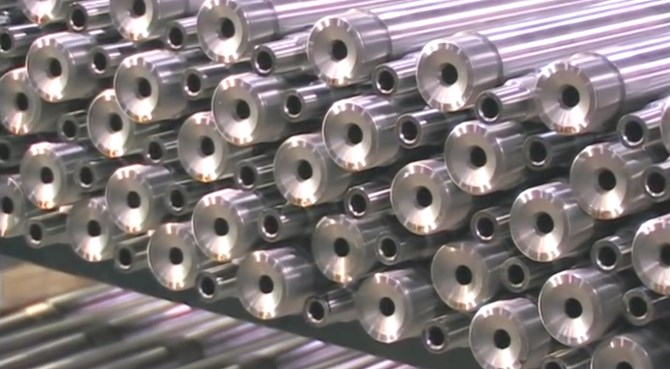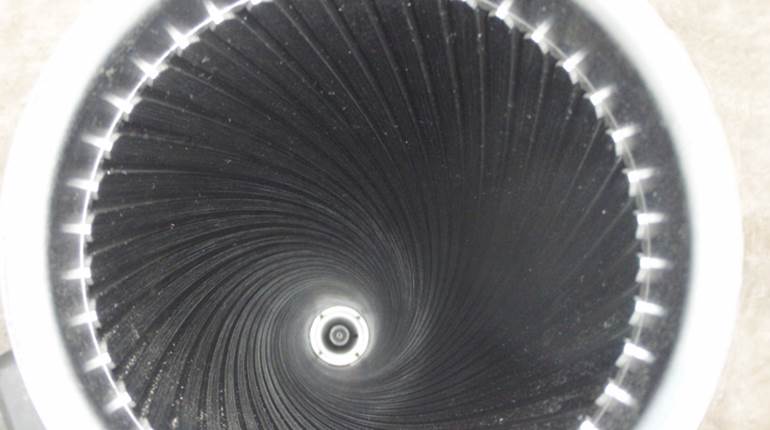
The notion of spinning an object as it is thrust through the air in order to stabilize it and allow it to be more accurate has been with us for a long time. Early archers would often mount their fletching feathers in a helical pattern to help stabilize their arrows. As muskets—unrifled, shoulder-mounted arms—flourished, some thought was given to spinning the ball inside the barrel, but because blackpowder leaves so much residue such technology wasn’t pursued much until the late 16th century. Warfare tactics of that time dictated that a musket was needed because it is quicker to reload, and the tactic of exchanging mass volleys of shots between combatants made accuracy of small importance.
Rifling a barrel was first done successfully in the gun shops of Augsburg, Germany, in 1498. Early rifle makers had to deal with a great many problems in order to successfully rifle a barrel. Grooves had to be cut one at a time; getting them even, uniform in depth and smooth required great skill, and plenty of hand work. That skill and hand work was very expensive, making the rifled barrel relatively rare until the 19th century when industrialization and more modern repeatable metalworking machines were developed.
For more than 400 years rifling was cut into a barrel, each groove being cut one at a time. The process of broaching—having a tool with progressively deeper buttons along its axis—allowed barrel makers to cut all of the grooves in a barrel in a single pass. This cut down the manufacturing time of making a barrel a great deal making rifled barrels more accessible to the masses. A somewhat similar process called “button rifling” was developed. The main difference between button rifling and broaching is that broaching cut metal; button rifling simply pushes the metal out of the way. 
Eventually some European gunmakers developed the idea of forging a barrel complete with chambering and rifling. Forged barrels start with a blank with a central hole. A mandrel with the reverse profile of the rifled barrel’s interior is slipped into that hole. The blank with the mandrel is placed into a machine with hundreds of little hammers that beat the blank quickly and repeatedly. This heats up the metal in the blank, allowing it to soften a bit and be forged into the profile desired. When the finished barrel exits the machine, the mandrel is removed, and the result is a finished and chambered barrel. A forged barrel is usually quite accurate and has a somewhat longer longevity in service than other barrels.
A few manufacturers use flow forming to make their barrels. Like the forged barrel, a blank with a mandrel is placed into a machine with rollers that operate under high pressure to roll the barrel metal into plasticity. Flow-formed and forged barrels are not as common because the machinery used to make them is expensive to purchase and maintain.
The first rifles shot round balls of lead. Rifling did induce a spin on these projectiles, though it did so via the patch used as a bore sealer. Because of this, early rifles could not induce a perfectly repeatable spin unless the shooter’s technique and materials were identical. When elongated projectiles came about, thus eliminating the patch, accuracy was enhanced.


Images of Cut-Rifling process courtesy Accurate Shooter
Rifling is usually expressed as a twist rate; that is the length required to complete a full revolution along the horizontal access. For example, a firearm with a 10” twist has rifling that will turn the projectile 360 degrees in 10 inches, often expressed as a ratio, 1:10. Rifling can either be right hand or left hand. Right-handed twists mean the projectile turns clockwise from the standpoint of the shooter. Left-handed twists rotate the projectile counterclockwise from the perspective of the shooter.
Gain-twist, or progressive rifling, increases the twist rate as the projectile moves down the bore. It is claimed that gain-twist rifling imparts less angular momentum to the bullet, thus reducing the tendency of the bullet to drift in the direction of the twist. Gain-twist rifling saw its first use during the War Between the States. Early Colt revolvers employed gain-twist barrels, but because gain-twist rifling is more difficult to manufacture, it is usually not used in most hand-operated firearms. Today it is seen on the 20 mm M61 Vulcan Gatling gun in several current fighter jets and the larger 30 mm GAU-8 Avenger Gatling gun used in the A10 Thunderbolt II, commonly known as the Warthog. It has the advantage of lessening chamber pressures in these guns allowing them to be made slightly lighter. One modern handgun, the Smith & Wesson 460XVR, employs gain-twist rifling starting at a 1:100 and progressing to 1:20 near the muzzle. This is done to help minimize the throat erosion in the revolver chambered for an extremely high pressure cartridge. 
Another form of rifling that has a significant following is polygonal rifling. Instead of grooves cut or pressed into the barrel’s bore, the entire bore is made as a rounded-corner polygon, most often a hexagon or octagon. The advantage is the lack of sharp edges seals the bore better, thus decreasing erosion and wear. Though seen quite a bit in Heckler & Koch pistols the concept was first put forth by Sir Joseph Whitworth, a prominent British firearms engineer in 1853. Though shunned by the British military, Whitworth successfully deployed it in his rifled musket of 1857, and it was used extensively by the Confederacy. Whitworth rifles were very accurate, making effective shots as far as 2,000 yards.
As we have seen the purpose of rifling is to impart a spin to a projectile. Generally, the longer the projectile, the faster the spin needs to be to stabilize the bullet. Spin rates are very important to long-range precision shooters. Because longer bullets shed their velocity at a slower rate, they tend to shoot flatter than lighter, shorter bullets, thus making hitting distant targets a bit easier. Long-range precision shooters often specify faster twist rates than conventional sporting rifle makers because they typically shoot the heaviest bullet they can find for a given caliber.
The Greenhill Formula, developed in 1879 by George Greenhill, a professor of mathematics at the Royal Military Academy at Woolwich, London, is the accepted way to determine the most optimal twist rate for a given lead-core bullet. The formula,
T = CD2 x √SG
L 10.9
where T is the twist rate, C is a velocity factor (150 for bullets fired at less than 2,000 fps; 180 for bullets at more than 2,000 fps), L is the length of the bullet in inches and SG is the specific gravity (10.9 for lead-core bullets).
If the spin or twist rate is too slow, the bullet will yaw and eventually begin tumbling. You can see this on target by examining the bullet holes. Bullets that yaw leave elongated holes, often referred to as key-holing. The only remedy for this is a faster twist rate. On the other hand, bullets that spin too fast end up excessively wearing the bore, thus shortening its life. In cases where the bullet spin is extremely fast and the jacket of the bullet relatively thin, the lead core can melt and the bullet disintegrates in flight due to centrifugal force.
Most firearms manufactured today are designed to shoot a range of bullet weights. The twist rates in these guns are therefore something of a compromise. Usually it is optimal for what has become a standard bullet weight for that specific chambering. For example, a .30-caliber bullet can weigh as little as 100 grains or as much as 275 grains. So if you are buying a .30-06, most shooters shoot bullets in the 150- to 180-grain range. A 100- to 125-grain bullet may be a bit over-stabilized, but unless you plan on shooting 10,000 of them you probably will not over-erode your barrel. If you want to try one of the heavyweights, say a 250-grainer, you most likely will not see a yawing problem at 100 yards, but at 1,000 yards or more you likely will see some yawing.
For the majority of sport shooters, rifling twist rates is something they won’t need to spend a lot of time worrying over. Only those who venture outside the normally accepted range of bullet weights will have cause for concern. But the long-range shooter—the guy who wants to make consistent head shots at 3/4 mile or further—should pick his bullet first and determine the optimal twist rate before he ever starts a build.





































